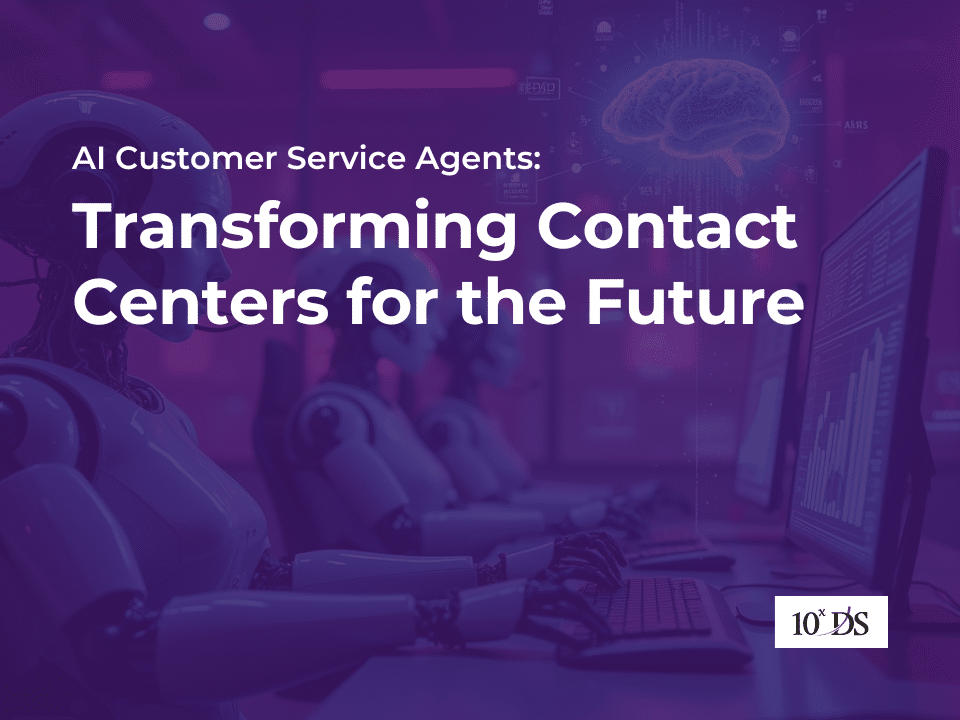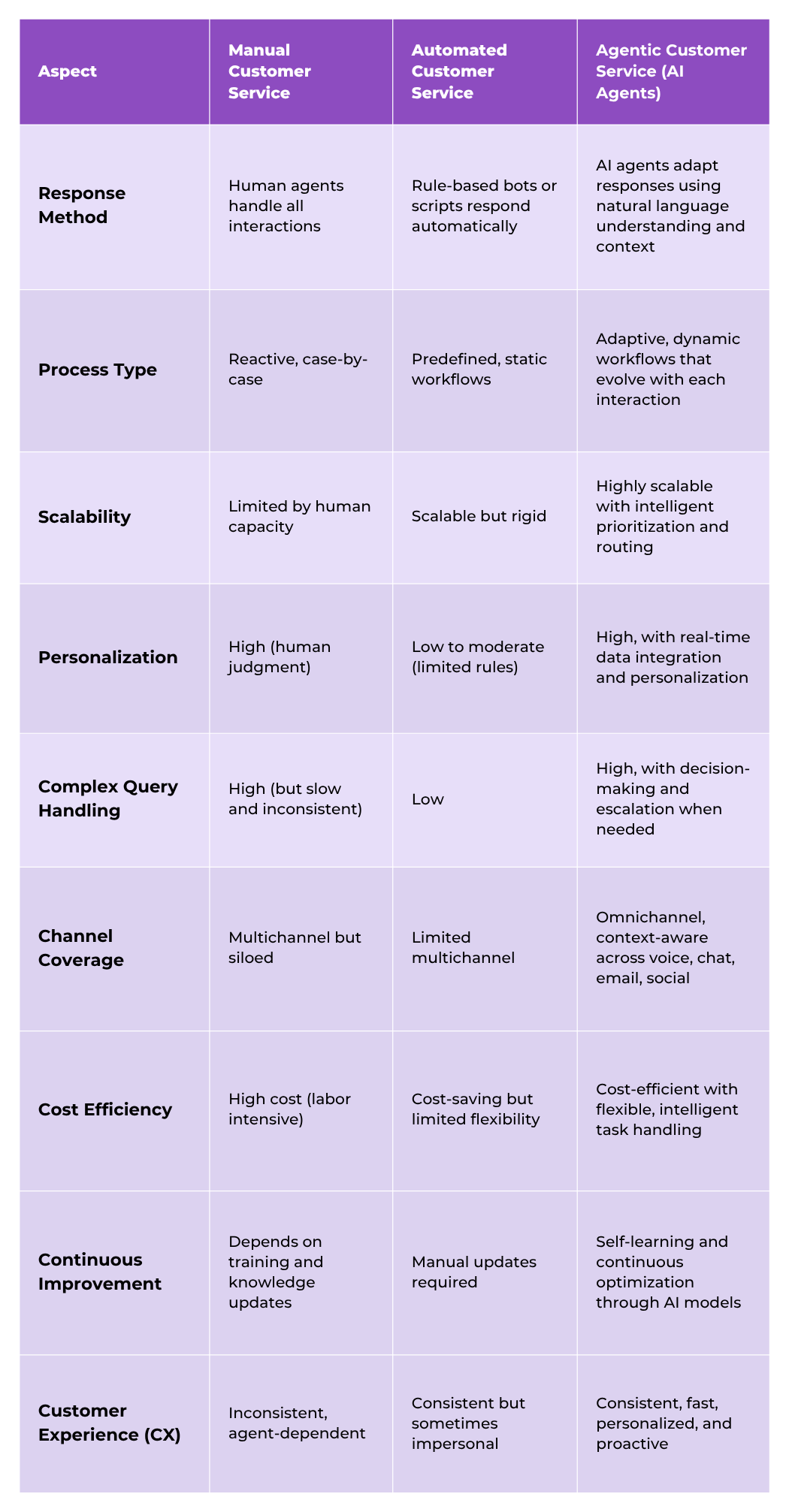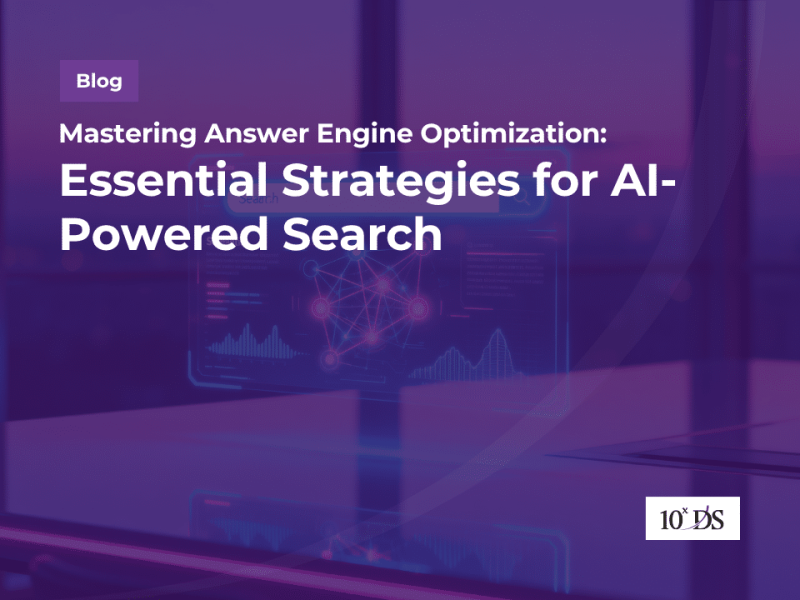
AI Customer Service Agents: Transforming Contact Centers for the Future
In today’s enterprises, customer service processes can broadly be categorized into structured and unstructured interactions. Structured processes are predictable and repetitive — tasks like checking an order status, resetting a password, or updating account information. These follow clear, predefined workflows and have long been the domain of traditional automation and basic chatbots. However, much of customer service is unstructured, involving complex, dynamic scenarios that require understanding, judgment, and adaptability. Handling complaints, troubleshooting unique issues, or navigating emotionally charged situations demands more than just rule-based responses.
Introducing AI Customer Service Agents
As customer expectations evolve, the boundary between structured and unstructured processes often blurs, especially when queries span multiple channels like chat, email, voice, and social media. This is where AI agents prove invaluable. AI agents excel in customer service because they combine the precision of automation with the adaptability of human-like reasoning. AI Customer Service Agents handle structured tasks efficiently while also managing unstructured interactions using natural language processing, context understanding, and learning from past interactions. This enables them to provide accurate, timely, and empathetic responses across diverse customer queries — reducing response times, improving customer satisfaction, and lowering operational costs. Unlike static automation, AI agents can scale, self-improve, and adapt to the evolving nature of customer expectations and business processes.
Let’s take a common use case to understand better about how AI Customer Service Agents work: Handling a customer complaint about a delayed delivery.
How It’s Handled Manually (Typical Steps)
- Customer contacts support (via email, call, or chat) and explains the issue.
- Agent verifies the customer’s identity (order ID, contact info).
- Agent checks order status in the delivery management system.
- If delayed, agent reviews reasons (logistics, stock issues, etc.).
- Agent communicates the reason and next steps to the customer.
- Agent may offer compensation (discount or expedited shipping).
- Agent updates the CRM with notes and resolution details.
- Agent follows up if required.
How AI Customer Service Agents or AI Agents Can Handle This
AI agents can process customer complaints like delayed deliveries using natural language understanding (NLU) to identify the issue from the customer’s message automatically. They verify identity using integrated data (past orders, contact info) and connect to backend systems to retrieve the order status. If a delay is detected, the AI analyzes the reason using connected logistics data and crafts a personalized response explaining the delay and proposed resolution. If compensation policies allow, the AI can autonomously offer a solution like a coupon or expedited shipping. All interactions and resolutions are automatically logged into the CRM, and follow-up actions are scheduled without human intervention.
Flow AI Agents Automatically Adopt
Customer Message → NLP Issue Identification → Identity Verification →
Order System Query → Delay Reason Analysis → Personalized Response →
Automated Compensation calculation ( not a rulebased process but adaptive) → CRM Update → Schedule Follow-up
Here we can clearly see that offering compensation is not rule based but it is adaptive flow that AI agents made based on policies and procedures. Let us now examine a few more use cases that are apt for AI Customer Service Agents.
Billing Dispute Resolution
When a customer contacts support to dispute a billing charge, traditional systems often route the request to a finance team, creating delays. AI agents streamline this by first extracting key details from the customer’s query — such as invoice number, disputed amount, and reason — using natural language processing. The AI then queries the billing system, verifies the transaction, checks past payment patterns, and applies company policies to decide whether an automatic refund or escalation is needed. If the case meets criteria for auto-resolution (e.g., a first-time billing error), the AI processes a refund or credit. Otherwise, it generates a case file with all gathered data and routes it to a human agent for review, reducing manual back-and-forth.
Subscription Change Requests
Customers frequently request changes to subscriptions — upgrades, downgrades, cancellations. Traditionally, agents would verify identity, review account eligibility, and manually process the change. AI agents can now handle this end-to-end. Upon detecting a subscription change request, the AI confirms the user’s identity via integrated data (no repetitive questions), retrieves subscription details, checks eligibility (e.g., minimum term met), and either executes the change or informs the customer of next steps. If required, it also handles prorated charges or refunds automatically.
Technical Troubleshooting
For issues like “my internet is down” or “I can’t log into my account,” traditional support involves scripted Q&A and often escalates quickly to technical teams. AI agents, however, dynamically adjust workflows based on customer input. After identifying the issue type, the AI runs through adaptive diagnostic steps (e.g., asking about modem lights, error messages) and uses logic trees or past resolution data to suggest fixes. If the problem persists beyond basic solutions, the AI collects diagnostic data and opens a ticket for human specialists — reducing time and improving first-contact resolution rates.
Order Cancellations and Modifications
When customers want to cancel or modify an order, speed and accuracy are critical. AI agents handle these by identifying the request, checking order status (e.g., whether it has shipped), reviewing cancellation or modification policies, and executing the allowed actions. If modification isn’t possible due to fulfillment status, the AI proactively offers alternatives (like returning the item after delivery or applying discounts). This reduces friction and enhances customer satisfaction.
Customer Feedback and Sentiment Analysis
When customers submit feedback — positive or negative — AI agents can now do more than just log the comment. They analyze sentiment, categorize the feedback, and trigger adaptive workflows. Positive feedback may prompt loyalty rewards or requests for testimonials, while negative feedback can auto-create a service improvement task or escalate serious complaints directly to management, even before the customer explicitly requests further action.
Now let us try to analyse the aspect of manual, automated and agentic customer service.

The future of customer service lies in the seamless blend of automation, intelligence, and human-like adaptability. While manual and basic automated approaches have served well in the past, they are increasingly unable to meet the demands of today’s complex, fast-paced customer expectations. Agentic customer service, powered by AI agents, represents the next evolution — delivering not just faster responses, but intelligent, context-aware interactions that continuously learn and improve. These AI agents can handle both structured and unstructured queries, adapt workflows dynamically, and provide highly personalized experiences at scale. As businesses strive to enhance efficiency, reduce costs, and deepen customer engagement, agentic customer service will move from an innovation to a necessity, transforming support from a reactive function into a proactive, strategic advantage.
Talk to our AI Agents experts to learn more.


